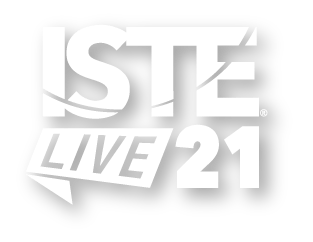

What Do Educators Know About Using Neuroscience in Lesson Design? |
Listen and learn : Research paper
Roundtable presentation
Research papers are a pairing of two 20 minute presentations followed by a 5 minute Q & A.
This is presentation 2 of 2, scroll down to see more details.
Other presentations in this group:
Lisa Beaulieu Dr. Susan Poyo| Audience: | Coaches, Teachers, Teacher education/higher ed faculty |
| Attendee devices: | Devices useful |
| Attendee device specification: | Smartphone: Android, iOS, Windows Laptop: Chromebook, Mac, PC Tablet: Android, iOS, Windows |
| Topic: | Instructional design & delivery |
| ISTE Standards: | For Coaches: Content Knowledge and Professional Growth
Learner
|
| Additional detail: | Graduate student |
In 2018, 44 million students, 2.6 million teachers, and 81,000 schools in the United States had access to high-quality Internet service (Education Super Highway). Many teachers will soon create their own technology-enhanced classroom materials if they are not already doing so. Even though the tools and the access exist, a 2017 survey of 1,001 K-12 teachers found that 25% of teachers still express reservations about their ability to teach with technology effectively (The University of Phoenix, 2017).
McKenney, Kali, Markauskaite, & Voogt (2015) argue that because teachers are increasingly creating their own technology-enhanced learning materials, more needs to be done to develop teacher design expertise. They suggest a framework that “brings together existing research on design across disciplines, including engineering, architecture and professional instructional design” (p. 182). An additional source of design information comes from cognitive psychology. Design expertise flows out of teacher knowledge about students, content, and technology (McKenney, et al., 2015). However, recent reports show that educators commonly hold misconceptions about research findings from neuroscience and educational psychology and how it relates to student learning (van Dijk & Lane, 2018).
The Cognitive Theory of Multimedia Learning (Mayer and Moreno, 2003) is a meaningful source of guidelines that flows out of research on working memory (Baddeley, 1992) and Cognitive Load Theory (Sweller & Chandler, 1991; Paas, Renkl & Sweller, 2003). This research indicates people are limited in what they can process at one time (Mayer & Moreno, 2003). For instance, if a learner is asked to use his or her eyes to read (convert words into meaning) while simultaneously asked to use his or her eyes to interpret a graph, learning will be less than if the student is only asked to do one task at a time. When too much new information is placed in front of the learner, the result is cognitive overload (Chandler & Sweller, 1991). Instruction and practice implementing Multimedia Principles in designing technology-enhanced lessons can empower teachers to reduce cognitive overload, freeing mental resources so students can integrate new information into long-term memory more easily (Mayer, 2014).
We will conduct a non-experimental, exploratory quantitative survey to collect descriptive data. Comparative statistics may be drawn from the results. Comparative studies are natural extensions of descriptive research and do not manipulate variables (Schreiber and Asner-Self, 2011).
After procuring IRB from our respective universities, we will recruit teachers as participants from a variety of online sources and school settings. We will request participation from educators across the country who teach in diverse content areas. We will create a web-based survey to collect demographic data as well as Likert scaled responses concerning knowledge of neuroscience, educational psychology, and multimedia design principles.
Data collection will occur in the winter of 2020. We expect that teachers will vary in their knowledge of research, working memory, Cognitive Load Theory, and the Cognitive Theory of Multimedia Learning. We hypothesize that a significant proportion will not be familiar with these theories and principles. Based on the literature review we have conducted, we suspect many experienced teachers are not aware of newer developments in educational psychology and neuroscience. As well, we anticipate that few teachers will have a working knowledge of multimedia principles they can apply to their technology-enhanced lesson planning.
We believe this research has educational value for two reasons. First, with increased access to high-speed Internet, the ubiquitousness of technology-enhanced learning will continue to rise. Second, there is a growing body of research concerning the depth of learning that can occur with effective management of technology in schools. We believe this research can help bridge the gap for educators who are not confident in their knowledge or ability to design effective lessons and presentations. Implications for pre-service and professional development programs may result.
Baddeley, A. (1992). Working memory. Science, 255(5044), 556-559.
Education Super Highway (2018). State of the States Report. 2018 annual report of the Education Super Highway. Retrieved from https://s3-us-west-1.amazonaws.com/esh-sots-pdfs/2018%20State%20of%20the%20States.pdf
Mayer, R. E. (2014). The Cambridge handbook of multimedia learning, 2nd ed. (R. E. Mayer, Ed.). New York, NY: Cambridge University Press
Mayer, R. E., & Moreno, R. (2003). Nine ways to reduce cognitive load in multimedia learning. Educational Psychologist, 38(1), 43–52.
McKenney, S., Kali, Y., Markauskaite, L. & Voogt. J. (2015). Teacher design knowledge for technology enhanced learning: An ecological framework for investigating assets and needs. Instructional Science, 43(2), 181.
Paas, F., Renkl, A. & Sweller, J. (2003). Cognitive load theory and instructional design: Recent developments. Educational Psychologist, 38: 1–4.
Schreiber, J., & Asner-Self, K. (2011). Educational research: Interrelationship of questions, sampling, design, and analysis. Hoboken, NJ: John Wiley & Sons, Inc.
Sweller, J. & Chandler, P. (1991). Evidence for cognitive load theory. Cognition and Instruction, 8(351–362).
The University of Phoenix. (2017, August 29). University of Phoenix Survey finds that American K-12 teachers assign less homework than often perceived. Survey also finds nearly ten percentage point increase year-over-year in technology and social media use in the classroom [Press release]. Retrieved from https://www.phoenix.edu/news/releases/2017/08/uopx-finds-teachers-assign-less-homework-than-perceived.html
van Dijk, W., & Lane, H. B. (2018). The brain and the US education system: Perpetuation of neuromyths. Exceptionality. Routledge.

